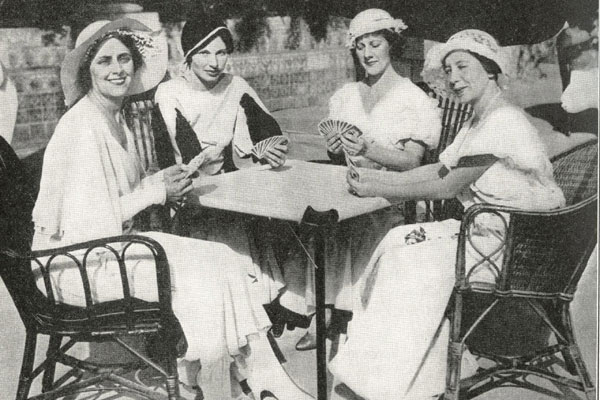
History of Bridge

"Bridge is derived from the 17th century card game whist, which was in vogue among the English nobility of the time. In whist, four players (who comprise two partnerships) are each dealt 13 cards from a 52-card deck, with a partnership’s objective being to win as many tricks as possible. There was no auction to determine the trump suit as there is in modern bridge, and the scoring was vastly simpler.
Though whist may seem crude in comparison to today’s bridge game, its popularity spread to other parts of the world, most notably the Middle East. In Turkey, it is believed that whist evolved into one of the first forms of bridge in the late 19th century. The calls “double” and “redouble” were added to double and even quadruple any betting stakes, and the concept of a declarer opposite an exposed dummy also emerged at this time.
By the turn of the century, the game evolved into plafond (“ceiling”) in France and auction bridge elsewhere in the world. Plafond was an offshoot that required each partnership to state the number of tricks they were going to take, while auction bridge introduced the element of bidding to determine which suit, if any, would be trumps.
In 1925, the game that we know today was derived from auction bridge and plafond. Contract bridge was invented by the American Harold Vanderbilt, who had some invaluable idle time on a steamship cruise. Vanderbilt’s brainchild incorporated a number of new features, most notably a sophisticated scoring table and varying modes of vulnerability.
“Contract” was so named because it required a partnership to commit to a contract of a certain number of tricks. Failure to fulfill a contract resulted in a scoring penalty; success, in an award.
Contract bridge remains popular around the world. It combines the elements of mental stimulation, luck, and socializing that are hard to find in other games so cheap and easy to play. Although bridge’s Golden Age popularity may not be replicated again in the United States, millions of Americans still enjoy the game. And bridge players are not limited to the States; Holland, for example, teaches bridge in public schools. The game is played so much in Iceland that the tiny country of 300,000 boasted the world championship-winning team in 1991.
Other unlikely hotbeds of bridge include Brazil, Turkey, Israel, and Norway. France, meanwhile, won a world championship in 1997, while Italy, as mentioned, has put together some of the greatest teams ever. Bridge is one of the few games played today by people of all ages, races, and nationalities."
Content provided courtesy of Jeff Tang. For additional information on the history of bridge, visit www.BridgeBum.com.
Leave a Legacy for Bridge; Encourage Others to Follow Suit.
Photo courtesy of ACBL Archives.
